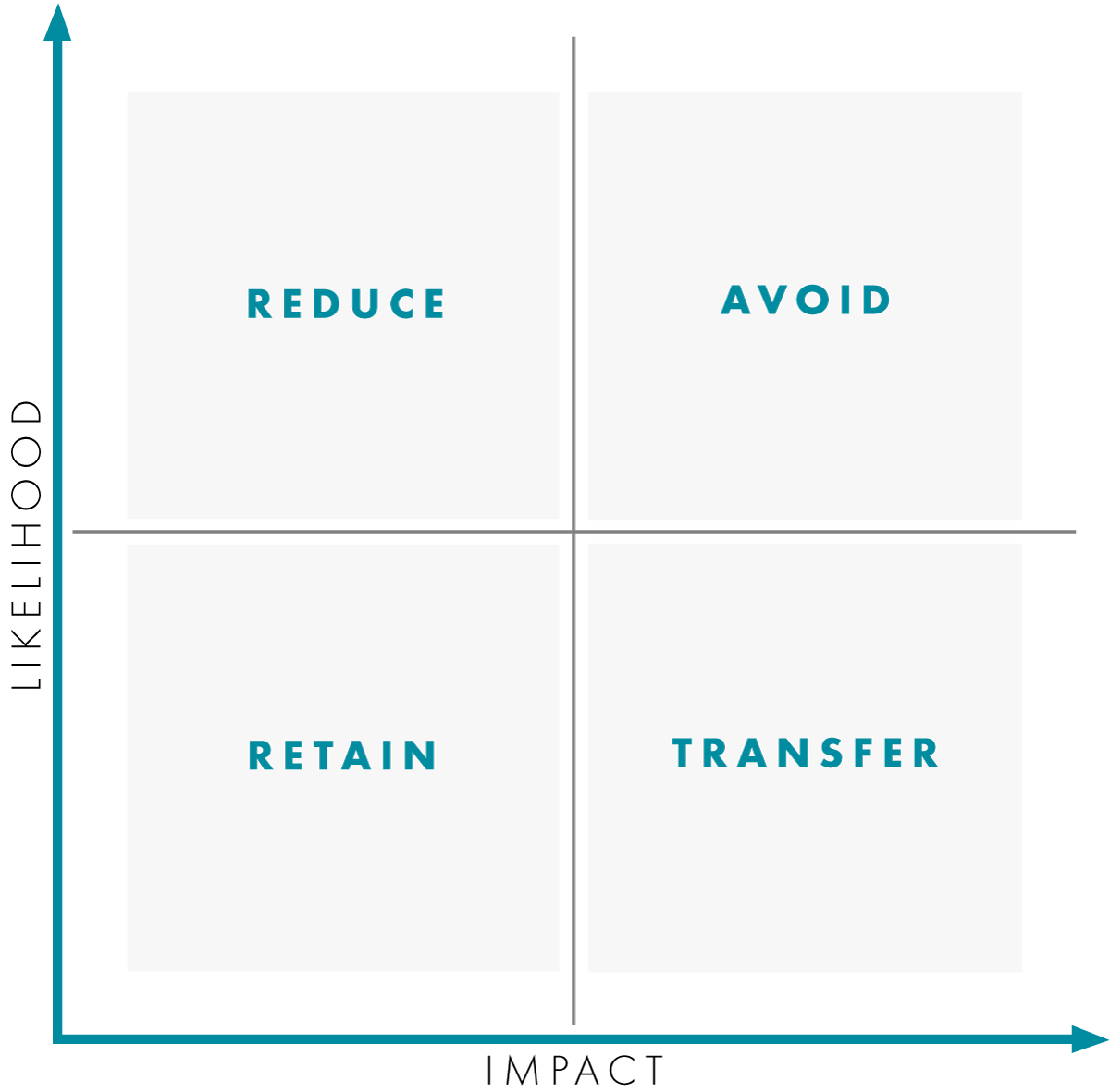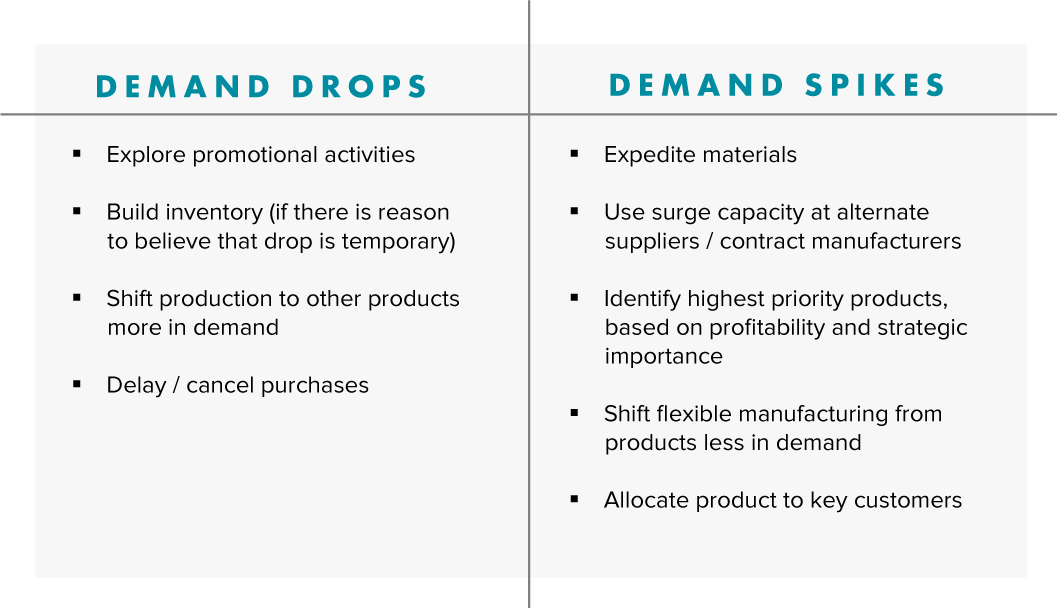Supply Chain Risk Management: Focus on Impacts, Not Events
The COVID-19 pandemic has given many businesses a clear understanding of how impactful unexpected events can be on their supply chain risk management. Businesses are realizing that they need to be resilient so they can quickly adapt to new realities.
But how is it possible to anticipate all the events that might disrupt your supply chain? Fires and tornadoes can knock a plant or distribution center out of commission without warning. We know that every year there will be hurricanes and floods, but no one can predict precisely how many storms there will be, and where and when those will happen. In any given year there will likely be geopolitical issues – trade wars, sanctions, regime changes – but will these harm or benefit you or your suppliers? And who would have predicted that an outbreak of pneumonia in a single city in China would become a pandemic that would basically shut down the global economy within 3 months? The fact is that there are so many events that can impact a supply chain that it is simply not practical or valuable to anticipate them all.
Here’s what I think – maybe we need to care less. I don’t care what all the possible events that can disrupt my supply chain are, because trying to anticipate and plan for every possible event is way too complex. Instead, let’s focus on the impacts that those events can have on the supply chain. Events are innumerable and unpredictable; impacts are finite, and can be quantified and planned for. But in order to plan for potential impacts, leaders do need to care about their supply chains. They need to have thorough, accurate, and up-to-date knowledge of how their supply chain functions in order to assess the potential bottlenecks and vulnerabilities and how they can be mitigated.

The “I don’t care” approach still uses standard supply chain risk management (SCRM) tools like a vulnerability analysis. In a vulnerability analysis, we look at the likelihood and the impact of potential disruptions and categorize actions accordingly. Some SCRM approaches would have you perform this analysis for a myriad of possible events. The “I don’t care” approach uses the same analysis, but reduces the universe of risks that you are assessing; e.g. instead of identifying the likelihood and impact of a fire, or a flood, or a tornado, identify the likelihood and impact of losing a production site.
There are three broad areas where supply chain risk is most prevalent:
Supply Chain Risk Area #1 – Demand
Customer demand drives your business. A good picture of what your customers and consumers are buying is essential to drive many supply chains. Transportation, warehousing, production, and suppliers are all aligned to meet your customer demand. Changes in that demand can cause your supply chain to be out of sync – too much inventory, or not enough. Those changes can be caused by any number of events, contained to one customer or spanning many. I don’t care about every event that can impact demand, but supply chain leaders can and should prepare for demand spikes or drops and develop plans for what to do when they occur.
Visibility
Distribution chains have multiple tiers, which can mask true demand. Depending on the business, customers could be wholesalers, distributors, retailers, and consumers. Real demand comes from consumers – all the other tiers are necessary ways of getting product to the end consumer, but they actually interfere with understanding the demand signal from that consumer. It is important to have tools to see through the distortion to consumer demand. One example is regular collaboration meetings with key retailers, which can bring market intelligence sooner than waiting for changes in orders from distributors and wholesalers. There are other tools, of course – POS and syndicated data, website sentiment analysis, etc. The key is to find the tools that reduce demand lag and improve clarity.
Response
Be prepared for spikes or drops in demand, so that you can respond quickly. Detection buys you time and alerts you to take action. Once a change is detected, consider the tools in your supply chain toolset and apply the right tools for the situation.
Supply Chain Risk Area #2 – Supply
Many supply networks are complex, multi-tiered, and geographically dispersed. Suppliers and production sites may be located across the globe. An event in a distant region can impact a supplier – or a 2nd or 3rd tier supplier – leading to a shortage at your production site. A storm can disrupt transportation, preventing materials from reaching production sites, or finished goods from reaching customers. With a distributed supply chain it is nearly impossible to anticipate and mitigate all of the events that can cause disruption…but I don’t care. Having a clear picture of the supply chain flows throughout your network can enable leaders to plan for, detect, and react to the impacts of events across their supply networks.
Visibility
Manufactured products are made from multiple materials. It is critical that supply chain leaders understand what it takes to make their products, and which are the critical materials – the materials that cannot be substituted, and without which the product cannot be made. This analysis needs to extend beyond material spend; even an inexpensive material – including indirect materials like protective equipment, or maintenance parts – can shut down production. It is important to have a clear view of critical materials throughout the supply chain so that potential shortages can be detected and mitigation plans can be put in motion.
Response
It’s important to consider potential impacts before they happen, so that you can create plans to execute when they happen. For critical materials, consider qualifying alternate suppliers that you can go to when shortages happen – the additional cost of multiple suppliers is often balanced out by the reduced risk to your business. Explore alternate materials that can be used – having substitutions pre-approved allows you to be flexible when disruptions occur. Strive for flexible manufacturing that allows you to shift production across sites as needed. And where possible, design products with a common architecture and leverage postponement strategies that enable risk pooling. Of course, you could always carry higher safety stock of certain materials, but that’s a temporary fix that only buys time if a supplier or material is lost – and beware of expiry!
Supply Chain Risk Area #3 – Cost
Changes in cost of materials or services can rapidly threaten the profitability of your business. Cost variation can be driven from a variety of sources – changes in oil or other commodity prices, trade wars and tariffs, political unrest in a country that supplies raw materials, etc. Some of these drivers are even internal – I once worked for a large multi-national that changed their tax structure to benefit 90% of their business, but destroyed profitability of certain products in a region I was responsible for. Could I have predicted that specific tax change? Maybe, but I don’t care. Once we had visibility to the impact, we had to act.
Visibility
A robust sales & operations planning process (S&OP) can help spot cost changes. Future cost increases can be identified through communications with suppliers, or changes in supplier agreements. These predicted future cost changes should be input to the financial forecast in the S&OP process. If the change is significant enough to create a meaningful variance to the annual plan, that will become visible in S&OP. If an unpredicted change has already occurred, that would drive an actual (rather than forecast) variance to plan. In either case, once a meaningful change to cost has been detected, action can be taken in response.
Response
The key is to have accurate and timely visibility to cost drivers, and to understand your products and your supply network so that you can adapt when cost changes occur. Think of material cost changes in much the same way as material shortages, and have plans in place for alternate vendors and material substitutions. For changes in service costs (contract manufacturing, warehousing, transportation), explore alternate material and production sources so that you can move to a new supplier or even to a new region if the need arises. Deliberate choices to invest in redundant suppliers and qualifying alternate materials can provide resilience when unexpected changes impact your business.
For the tax change problem, the solution was to identify how our supply chain could adapt and change sourcing to maintain the business. Because we had already deliberately invested in capacity in another region, and because we had a comprehensive understanding of our supply chain capabilities and global capacity, we could identify an alternate manufacturing source in a different country (not impacted by the tax change). And because we understood regulatory requirements and our own R&D processes, we could quickly identify what it would take to manufacture in and ship from this site. Although “massive global tax restructuring” never came up in our vulnerability analysis, our supply chain knowledge, supply network flexibility and organizational agility allowed us to devise and deliver a solution that kept the business healthy.
Trying to plan for all of the events that pose supply chain risk can be overwhelming. Improving visibility, increasing supply chain flexibility, and having the organizational agility to make decisions quickly give you the tools to respond to a multitude of risks. By focusing on impacts rather than events, supply chain leaders can make the assessment of risks more manageable. Look, we all care deeply about our businesses – but maybe sometimes saying “I don’t care” puts us in a position us to focus on what’s most important.




